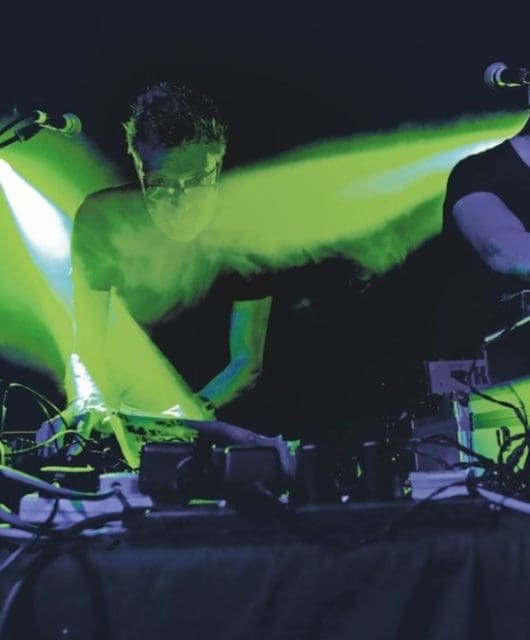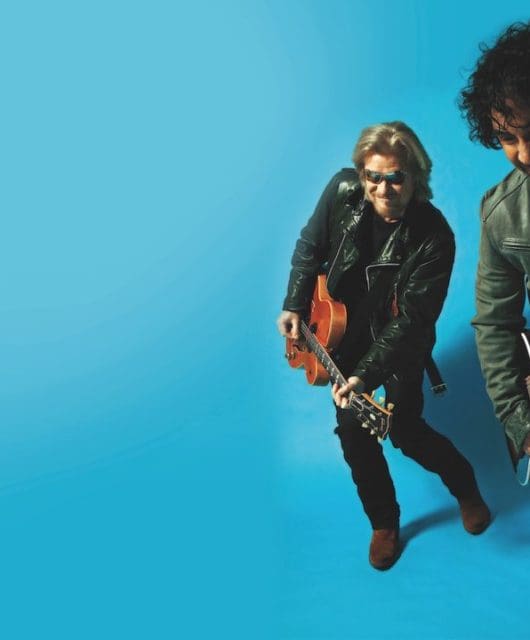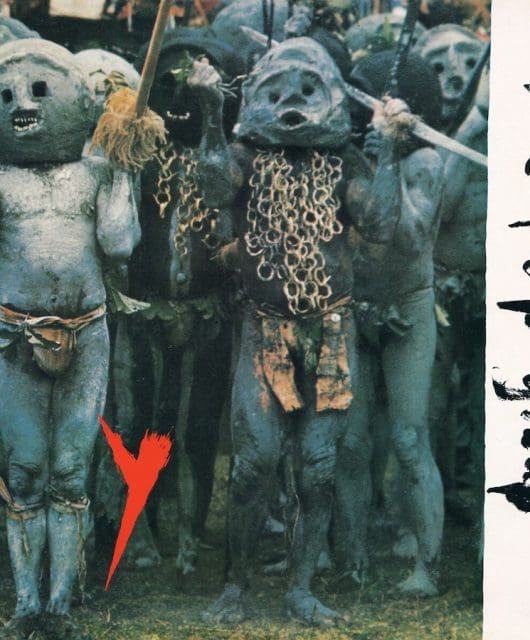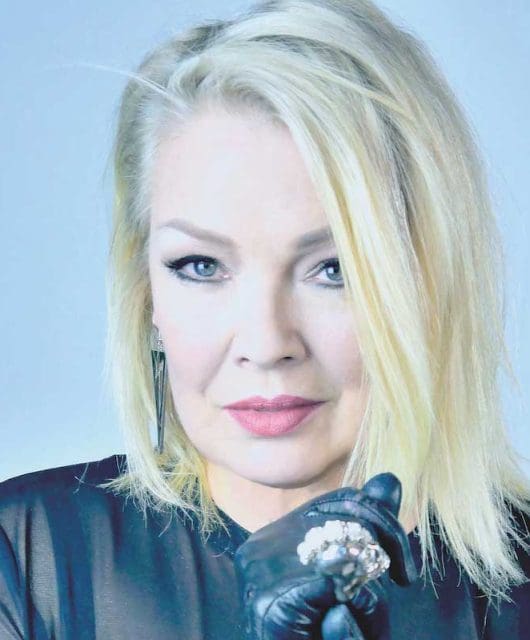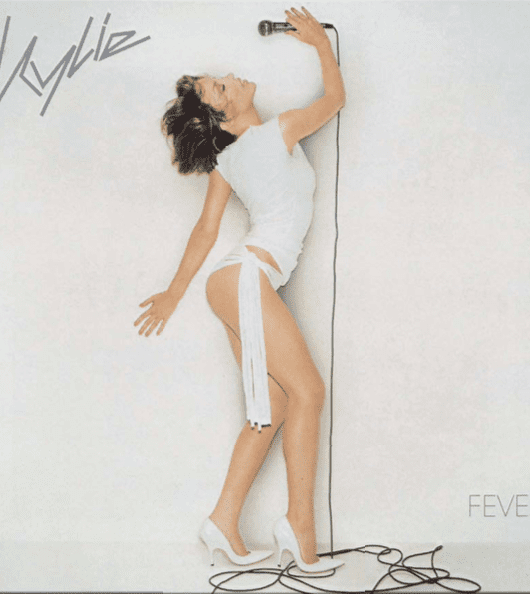Top 20 heroes of synth-pop
By Felix Rowe | December 2, 2022
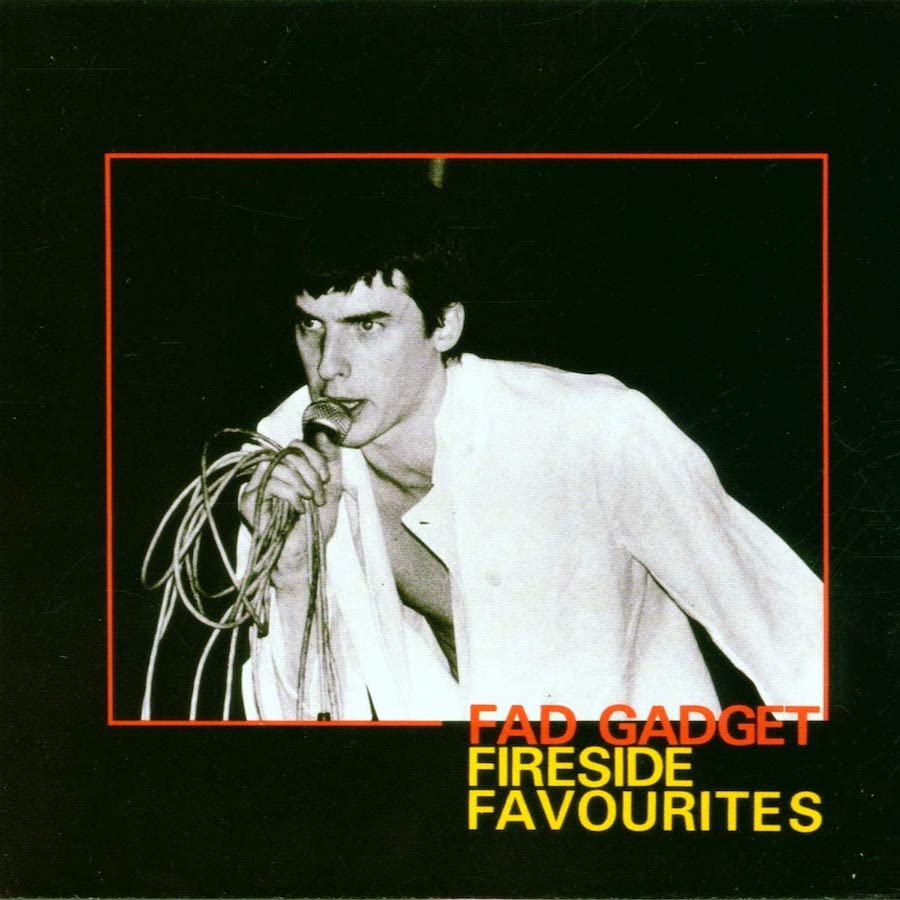
Classic Pop shines a light on those shadowy pioneers who paved the way for the electro revolution…
You may know your ABC from your OMD, but what about those pivotal figures who facilitated those famous bands’ ascent to the top of the charts?
Hidden behind the angular hair and programmed grooves were an elite group of game-changing individuals pushing the buttons, and here Classic Pop presents the underground avant-garde innovators who (mostly) never quite made it overground – fearless pathfinders who bashed down the door for those who did. We also salute the producers and programmers – sculptors of sound whose technical prowess shaped the hits.
Selecting just 20 entries has proved as challenging as patching up a modular synth, and some readers will no doubt be screaming at the glaring omissions. But hopefully the results sound pleasingly otherworldly, if not always tuneful…
20. Rusty Egan
The drummer of the Midge Ure-fronted punk band Rich Kids was instrumental in ushering in the futurist movement. As self-appointed DJ first at Billy’s and then on Tuesday nights at the weirdly wartime-themed Covent Garden nightclub Blitz, Egan curated a new sound and visual aesthetic from a disparate bunch of characters, helping to launch the careers of Landscape and Spandau Ballet. Alongside Steve Strange and Ure, he formed Visage – essentially the soundtrack to this bold new horizon.
19. Colin Thurston
Former jingle writer Thurston engineered Bowie’s “Heroes” alongside Tony Visconti. After taking control on Magazine’s second album, he produced The Human League’s early work and also Landscape’s European Man, supposedly blowing most of the album’s budget on one track. His work on Duran Duran’s first two albums produced a winning formula, one he would go on to repeat with Talk Talk, Kajagoogoo and Gary Numan. In the words of John Taylor, “He will be remembered as a major catalyst for the 80s sound.”
18. Gershon Kingsley and Stan Free
With the arrival of the Moog synthesizer, many musicians began to capitalise on the taste for this strange new instrument. One of the first was Gershon Kingsley with 1969’s Music To Moog By, featuring the first novelty synth-pop song, the appropriately-titled Popcorn. In 1970, Kingsley founded the First Moog Quartet featuring jazz musician Stan Free, who would also enjoy huge success with his own Hot Butter version of Popcorn. Sure, it was kitsch and gimmicky… but then so is much of the best synth-pop.
17. Yello
Since 1979, this eccentric duo have put Switzerland on the synth-pop map. The slicked-back, mustachioed twosome – resembling a pair of extras from Miami Vice – comprises millionaire industrialist and professional gambler Dieter Meier and his sidekick arranger, Boris Blank. Their funky, sample-heavy pop wouldn’t be out of place nestled between Beck and Pharrell. Though rarely cited as the genre’s paragons, they’ve livened up countless Hollywood film soundtracks and have enjoyed the remix treatment from Moby and Carl Cox.
16. Flood
In classic style, Mark ‘Flood’ Ellis went from being a studio runner (essentially the tea-boy) to assistant engineer then engineer, and finally became one of the world’s most in-demand producers. His work on acclaimed records by New Order, Depeche Mode, Erasure, Cabaret Voltaire, Frank Tovey, Marc Almond and a-ha cements his inclusion here. The Grammy winner who helped PJ Harvey earn her second Mercury is not exactly unacknowledged – but, equally, it’s not his face you see on the front of this magazine, is it?
15. Thomas Leer
Like many synth-poppers, Leer began as a punk before seeing the future in Krautrock and moving on to dabble in electronica. In contrast to his former collaborator Robert Rental, Leer is quite prolific; to the outside world both might be considered fairly obscure, but much of his output displays a real pop sensibility. In the late 80s he was briefly one half of the duo ACT with Claudia Brücken of Propaganda, and he remains active today. For the uninitiated, his back catalogue is a treasure trove poised to be discovered.
14. Robert Rental
Robert Donnachie’s brief career is a frustrating story of what could have been. Active only from around 1978 to 1980, this early proponent of abrasive, industrial electro remains an elusive, enigmatic figure. Of his four ‘albums’, three are collaborations (including 1979’s fabulous The Bridge with Thomas Leer), one is a raw live set (with The Normal) and another a collection of unfinished demos. The scant material he did put out suggested a huge potential never fully realised, and his untimely death in 2000 extinguished any hopes of a later-life renaissance.
13. Conny Plank
Kraftwerk might be the textbook group to namecheck for anyone with even a cursory interest in electronic music, but if you really want to score points, try dropping Conny Plank into conversation. He was the man behind the console for – yes – Kraftwerk, alongside many 1970s Krautrock staples, from Neu! to Kluster. What’s more, Plank is the bridge between the German scene and the later wave of British bands it inspired. Throughout the 80s, he produced synth-pop classics by Ultravox, Eurythmics and A Flock of Seagulls.
12. Richard H Kirk
A synth-pop quiz question: what do Dr Xavier, Wicky Wacky and Biochemical Dread have in common? Of course, they are all aliases of the electro pioneer Richard H Kirk, known most prominently for his work in Cabaret Voltaire. The group – who formed in 1973 and were named after an infamous Zürich nightclub – were early advocates of politically-charged industrial electronica, using tape loops and manipulated sounds to enormous effect. Their influence on synth-pop is considerable, not least on fellow Sheffield band The Human League.
11. Martin Hannett
The Factory Records producer was integral in shaping Joy Division’s spectral sound. Hannett deployed a range of studio techniques to embellish their thrashy live act, adding space to the claustrophobia. The band first resented his sonic expansion – “It sounded like Pink Floyd!” – but Hooky later conceded Hannett’s importance. Crucially, Hannett opened up their ears, a necessary factor in their transformation into New Order. They parted ways before Blue Monday but his influence is all over it. Oh, and his 1979 production of Almost on OMD’s first 7” made the young Vince Clarke buy a synth.
10. Telex
Strange common ground, perhaps, but synth-poppers and jazzers were both driven by a desire to push the sonic envelope. Belgium’s Telex, led by jazz veteran Marc Moulin, emerged with the 1979 album Looking For St Tropez, boasting a wonderfully future-kitsch testcard cover and the minor hit Moskow Diskow. Famed for their deadpan delivery and off-kilter humour, Telex entered the 1980 Eurovision with the objective of receiving ‘nul points’ (see the album Neurovision). The techno innovators also worked with Sparks – and hid behind masks years before Daft Punk and Deadmau5.
9. Martin Rushent
Rushent sat behind the desk for The Human League’s Dare, and his meticulous programming was integral to their breakout success. Under his guidance, the League graduated from an underground art-school project to Transatlantic chart toppers. Having worked with everyone from T-Rex to Buzzcocks, Rushent was a respected veteran, but he recognised that synths were the future. His work paid dividends, with Dare earning him a ‘best producer’ Brit Award. Though the late producer is hardly unsung in industry circles, it’s right that his contribution to one of synth-pop’s defining records be honoured.
8. Daniel Miller
Founder of Mute Records Daniel Miller provided a home to many of synth-pop’s most influential and ground-breaking artists. Mute has always been an eclectic label where underground heroes like Fad Gadget and Electronic Body Music pioneers Nitzer Ebb could sit side-by-side with globe-conquering acts such as Depeche Mode and Erasure. Miller is an artist too, having released material as The Normal and Silicon Teens. As Miller once said, “electronic music was more punk than punk rock”, and he was an integral figure in pushing things forward following the late-70s Year Zero.
7. J.J. Jeczalik
Behind many hit records is an unsung figure given the monotonous task of programming the sounds. Early 80s studio tech was clunky and primitive by today’s standards, and the job was arduous. Jeczalik’s credits on the revolutionary sampling machine the CMI Fairlight read like a Now That’s What I Call Synth-Pop tracklisting: ABC, Poison Arrow, Frankie, Relax, Stephen ‘Tin Tin’ Duffy, Kiss Me, Pet Shop Boys’ Opportunities and many more. He later found greater notoriety with the Art of Noise, an electro supergroup featuring fellow producers Gary Langan and Trevor Horn and NME journo Paul Morley.
6. Silver Apples
While those backward-looking Luddites The Beatles were still peddling their trite guitar music, New York’s Silver Apples were busy inventing synth-pop. Their 1968 debut sounds as though it was beamed in from another galaxy. Though undoubtedly a late-60s psychedelic imagining of the future, it’s like nothing else produced since.
Frontman Simeon created his own primitive synthesizer by daisy-chaining several vintage oscillators, and the hypnotic, electronic landscape that resulted still sounds phenomenally original. Loose, live-recorded drums bristle against uniform, pulsing mechanical oscillations – an early investigation into that tussle between man and machine later explored on so many synth-pop classics.
Of course, it was completely ignored upon release, but those throbbing pulses kept on reverberating into the future, attracting fans ranging from Spiritualized to Portishead.
5. Yellow Magic Orchestra
These Japanese electro pioneers belong in a category marked ‘Godfathers of Synth-Pop’. Unlike their contemporaries P-Model, whose own popularity remained largely domestic, YMO have been massively influential the world over. While clearly indebted to Kraftwerk, YMO created their own distinctly Japanese take on electro – and besides, Yellow Magic Orchestra’s 1978 computer-themed debut predated Kraftwerk’s own Computer World by three years.
Their list of technological firsts is impressive: these pioneers of sampling have the considerable honour of being the first band to use the distinctive TR-808 drum machine on record – a device which would soon alter the face of music forever. In fact, we can probably settle the ‘chicken and egg’ debate once and for all. Which came first? Neither… Yellow Magic Orchestra beat them both to it.
4. Landscape
These jazz punks turned synth-poppers, as featured on Tomorrow’s World, were at the forefront of London’s burgeoning futurist movement. They were among the first to programme electronic pop while also helping to coin the phrases EDM and New Romantic.
John L Walters tells us: “We went round telling everyone how sequencing and sampling was going to change the face of music, but reality may have outstripped our expectations. The lyrics of European Man are about the digital revolution we could see coming.”
Walters and his bandmate Richard James Burgess later provided programming for Kate Bush, while Burgess worked with Visage and Spandau Ballet before spearheading New York house with Colonel Abrams. Just to seal the deal, Burgess invented the iconic Simmons SDS-V electronic drum kit – an essential instrument for every discerning artist since, from Queen to Devo.
3. Tonto’s Expanding Head Band
Malcolm Cecil is the mastermind behind TONTO (The Original New Timbral Orchestra), the largest synth in the world. As Cecil tells us, “it was the machine I was destined to make, and it was built to resemble the cockpit of a rocket.”
The legendary beast has appeared in films and on many a great record. Alongside Robert Margouleff, Cecil was one half of Tonto’s Expanding Head Band, one of the earliest synth duos.
Their 1971 debut caught the ear of Stevie Wonder, at that point seeking ways to break free from the Motown sound, and together they crafted a new soundscape for pop music that eschewed traditional acoustic instruments. In short, classic period Stevie and TONTO are inseparable.
“They were real pioneers,” says Richard James Burgess. “The tone palette, the colour palette behind Stevie was so amazing. What really spoke to me was the idea that synthesizers weren’t just a sort of background thing, or these bleeps and bloops. They hit the sweet spot with Stevie Wonder. They were definitely ahead of us and I found them very inspiring.”
2. Wendy Carlos
Carlos rose to prominence in the late 60s with her groundbreaking reinterpretations of classical favourites using Moogs. One of the first artists to put synths front and centre, she is largely credited with moving electronic music from abstract experimentation to melodic populism.
Richard James Burgess tells us: “You just can’t ignore her, she was so massively influential” (the young Giorgio Moroder would have agreed). “Because of her, you now could suddenly see what the potential was for synthesizers.” Following the release of her 1968 debut Switched-On Bach, sales in Moog immediately spiked.
The triple Grammy-winning album inspired many copycat releases including 1969’s Switched-On Rock, featuring re-worked rock standards. As well as proving sonic atmosphere for The Shining, her futuristic soundscapes for iconic sci-fi films A Clockwork Orange and Tron inspired everyone from Heaven 17 to Daft Punk.
1. Fad Gadget
Frank Tovey is one of those visionaries whose considerable foresight was never matched by commercial success. Tovey was the polar opposite of the ‘lab technician’ persona of many early synth exponents, those who were as much programmers as performers. He came from the punk school, and electronic music gave him a means of expression which he injected with a sense of theatre in his live shows.
Tovey was the first signing to Mute Records and his albums are noted for their use of ‘found sounds’, making his music an important pre-cursor to the industrial style later deployed by Depeche Mode. Richard James Burgess sings his praises: “Fad Gadget was amazing… I loved the way he used electric drills and things like that. I don’t think he ever received the recognition he should have.”
Tovey’s dry vocal delivery was much imitated on later pop hits, while his often sexually provocative lyrics predate Frankie Goes to Hollywood. Long before Gorillaz came along, Tovey played the fictional frontman of Daniel Miller’s virtual group, Silicon Teens. Though mainstream success eluded him, he gained the adulation of his contemporaries.
- Want more from Classic Pop magazine? Get a free digital issue when you sign up to our newsletter!


